

Union Square Park has had an illustrious past. The completion of the Croton Aqueduct was celebrated there, the funeral processions of Presidents Andrew Jackson and Abraham Lincoln passed through there, and the first labor day parade was held there. While the park and its environs have changed over the past 172 years, the area remains a great public space with a variety of formal and informal uses. The park hosts a green market and a range of special events from Sukkah City to concerts, while street vendors, performers and impromptu protesters are regular fixtures. But even when no special events are occurring, the park is still home to a number of interesting permanent residents–statues!
Union Square Park was built at the union of Bloomingdale Road (Broadway) and the Bowery (Fourth Avenue). It was initially constructed in a simple oval centered around a fountain celebrating the completion of the Croton Aqueduct system.
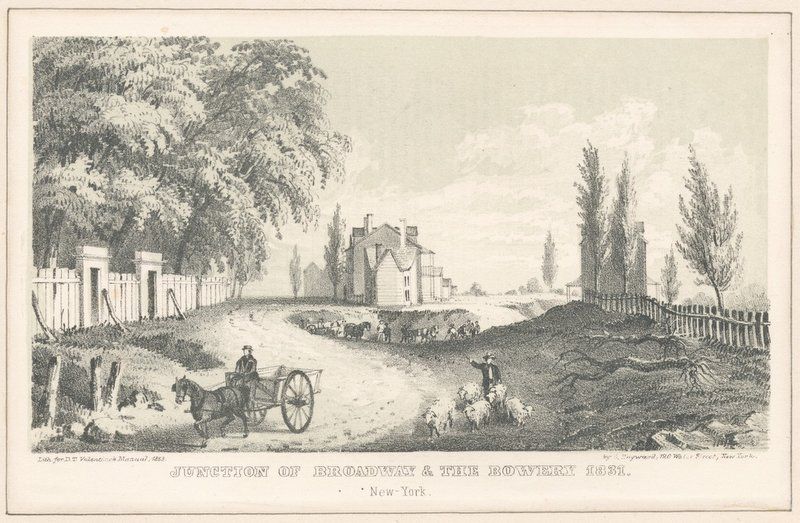 The future site of Union Square Park in 1831. Image via NYPL Digital Collections.
The future site of Union Square Park in 1831. Image via NYPL Digital Collections.
The Park’s humble origins:
 Image via NYPL Digital Collections. Lithograph by J. Bornet.
Image via NYPL Digital Collections. Lithograph by J. Bornet.
If you enter the park from the south, you will be greeted by George Washington. Washington is depicted reclaiming the city from the British on November, 25, 1783, Evacuation Day (the day the British evacuated the last of their troops from New York City). The statue was dedicated on July 4, 1856, and is the oldest statue owned by the New York City Parks Department. It was sculpted by Henry Kirke Brown and John Quincy Adams Ward and the base was designed by Richard Upjohn. The placement of the statue was an homage to an 1873 event in Union Square honoring Washington’s leadership in the Revolution.
The Statue of George Washington today:

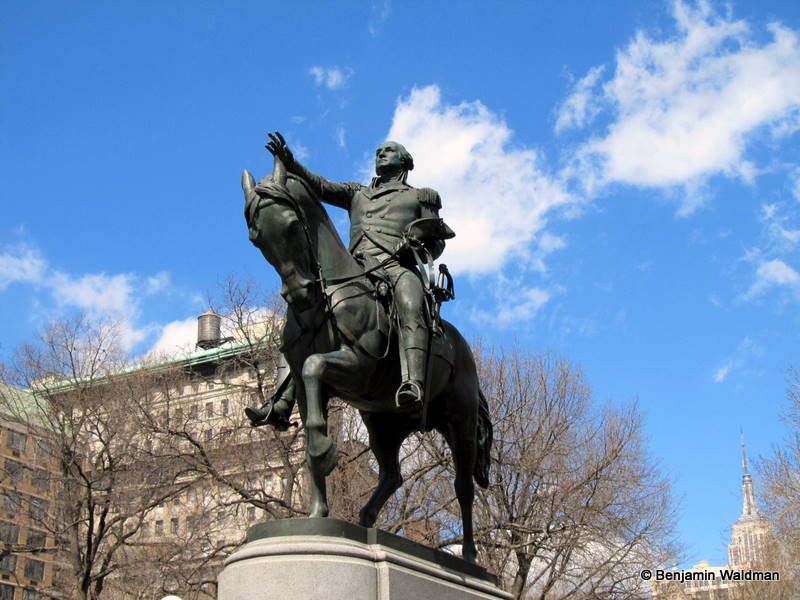
Walking northwest you will next see the newest addition to Union Square Park: a statue of Mohandas Gandhi, sculpted by Kantilal B. Patel and dedicated in 1986. Gandhi, who is located in a small raised garden, appears contemplative and peaceful.


Continuing north, the next monument you will pass is the James Fountain. The Fountain was sculpted by Karl Adolph Dondorff and was dedicated in 1881. Daniel James donated the Fountain to serve as a cure for alcoholism. It was one of a number of temperance fountains that were constructed in the city because temperance advocates believed that clean water could cure the affliction of alcohol. Tin cups, that have since been lost to time, were chained to the fountain for people to use.
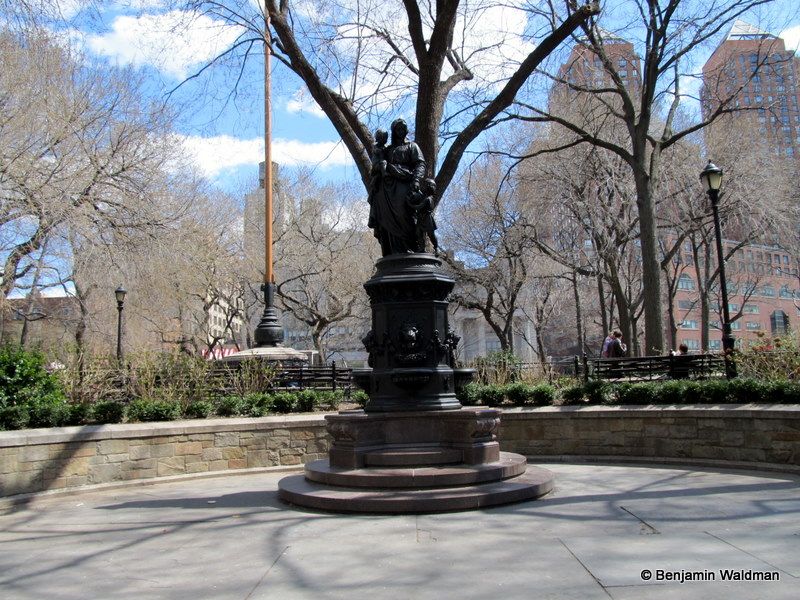
The Fountain possesses an incredible amount of detail which appears hidden from the casual passers-by.
The names of the fountain’s creators and its country of origin (Germany):
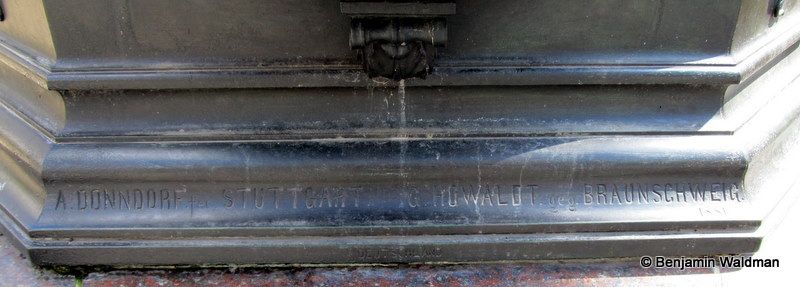


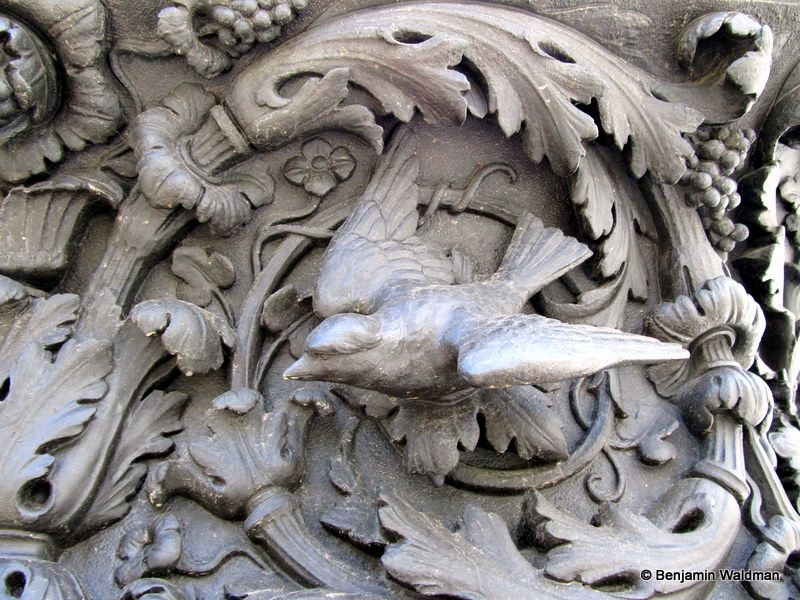
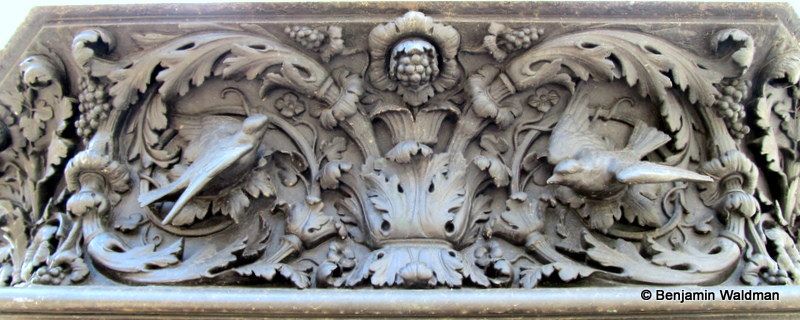
Heading east into the Park, just south of the pavilion, you will come face to face with Abraham Lincoln. Lincoln was sculpted by Henry Kirke Brown and was dedicated in 1870. The statue was originally located where Gandhi now stands. It was moved to its current location in 1930 to accommodate the expansion of the nearby subway lines. If you look at Lincoln’s left hand you can see him holding the Emancipation Proclamation.
The statue of Abraham Lincoln in its former location:
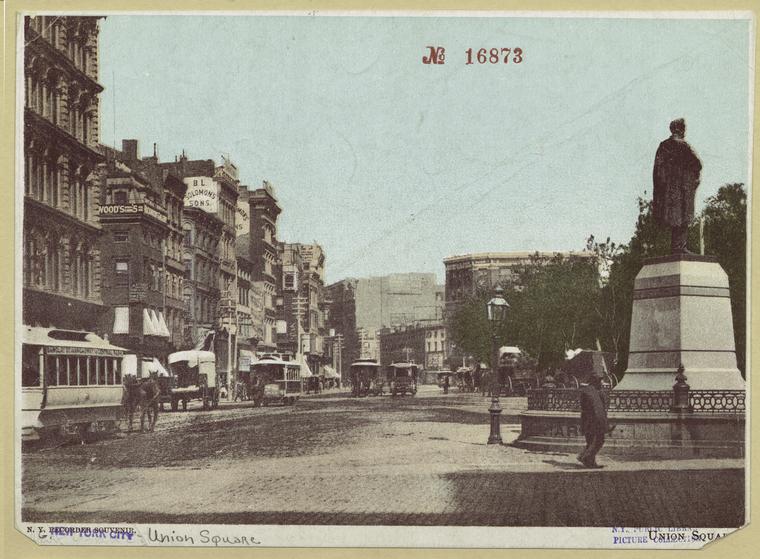
Abraham Lincoln today:


Behind Lincoln stands the Pavilion. It was built in 1932 as a replacement for previous structure on the site which had been demolished.
The current pavilion building once housed the popular outdoor bar, Luna Park. Protest over the city’s proposal for a year-round restaurant led to revisions into a “seasonal” restaurant but the design and tenant are still TBD.

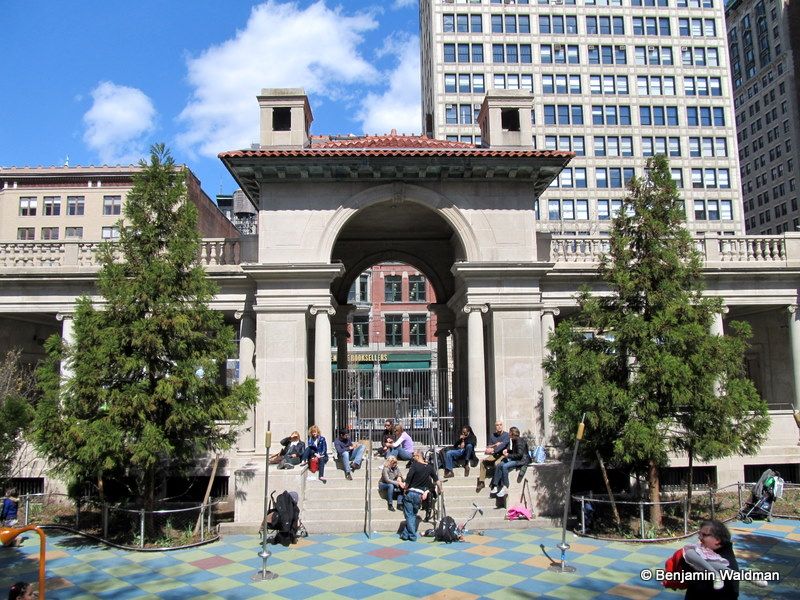
Lincoln stands facing the Independence Flagstaff. The Flagstaff was sculpted by Anthony de Francisci and was dedicated on July 4, 1930, the 150th anniversary of the signing of the Declaration of Independence. It was donated by Tammany Hall in memory of its president Charles F. Murphy, and is also known as the Murphy Memorial Flagpole. The flagpole contains a bas-relief of allegorical figures and a quote by Thomas Jefferson. A fountain celebrating the completion of the Croton Aqueduct formerly stood there.



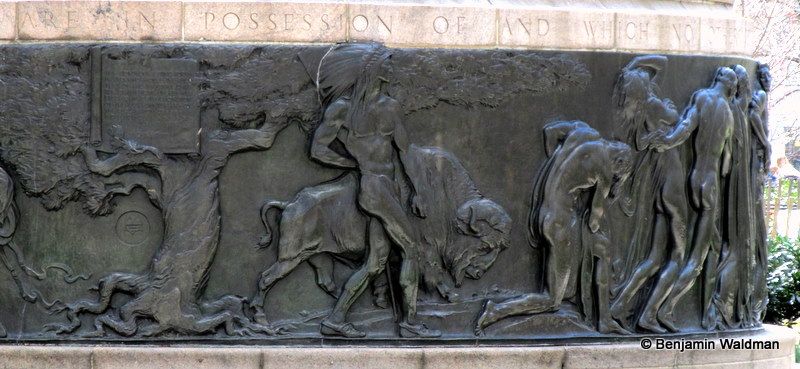
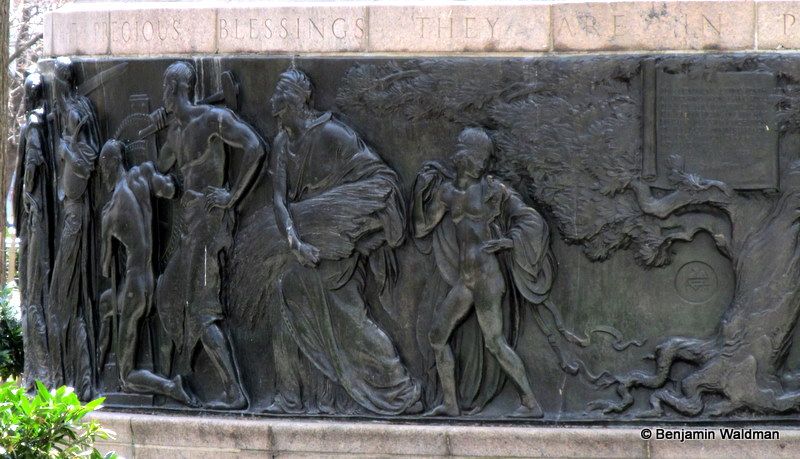
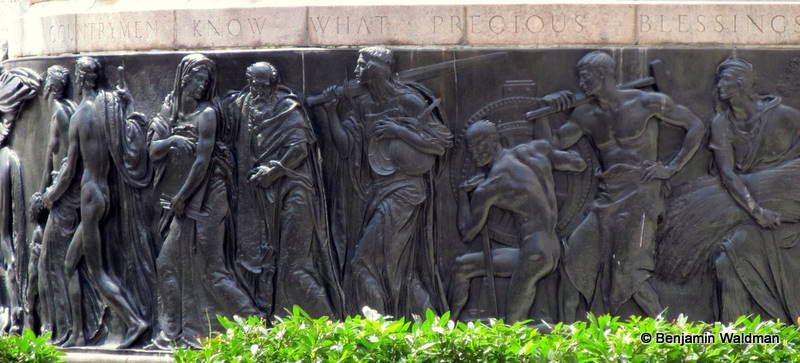


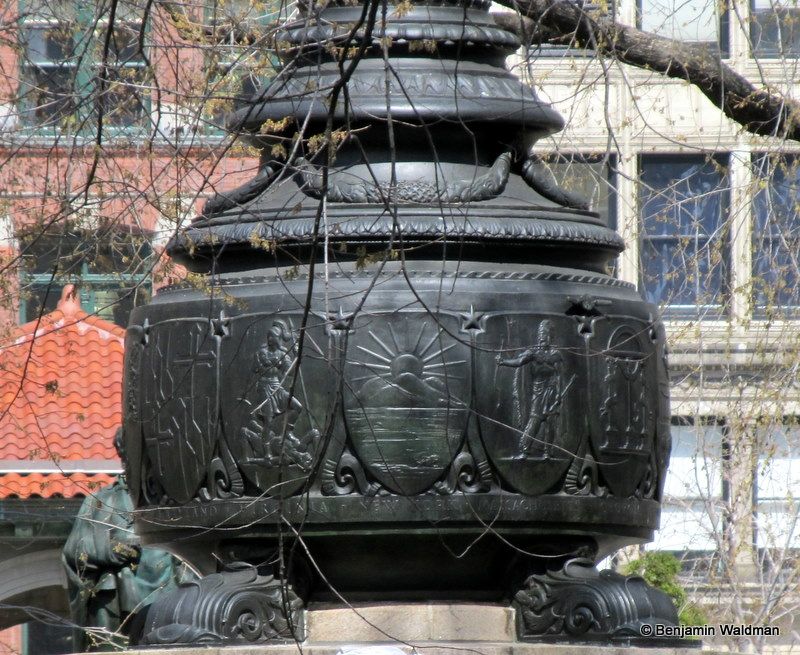
Marquis de Lafayette is the lone statue situated on the east side of the park. Lafayette was sculpted by Frédéric Auguste Bartholdi, and is one of three Bartholdi statues in New York City. The statue was dedicated on July 4, 1876, and was presented to the city by the French Government in appreciation for America’s help during the Franco-Prussian War and in recognition of Lafayette’s assistance to the colonies during the American Revolution. It was originally located in the southeast corner of the park and was relocated in the 1930s.
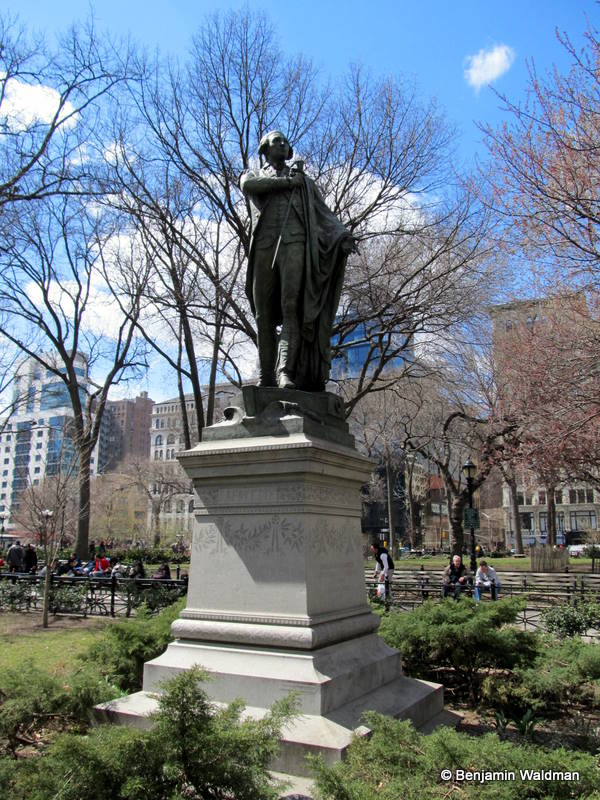
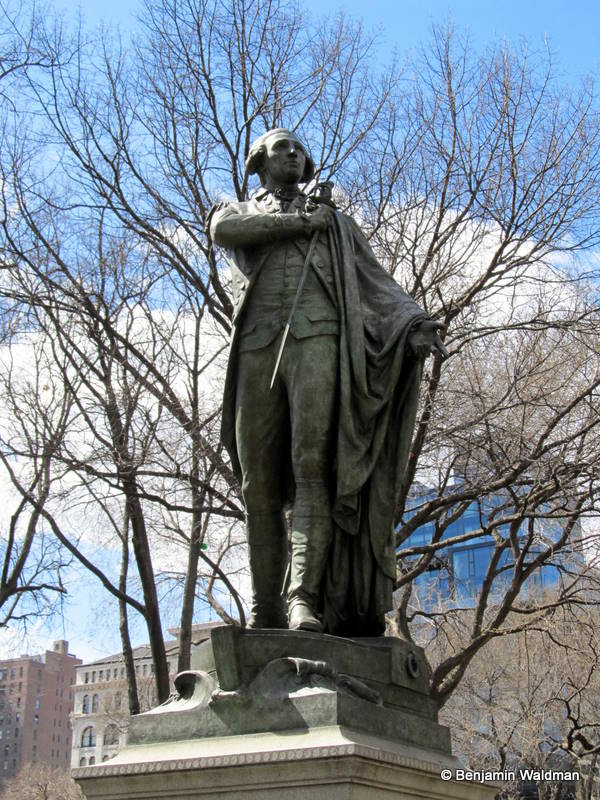


If you are intrigued about what else Union Square Park has to offer, check out the sequential plaques located in the park.

